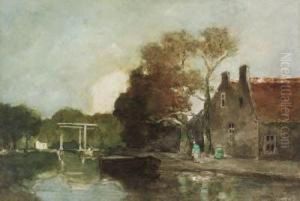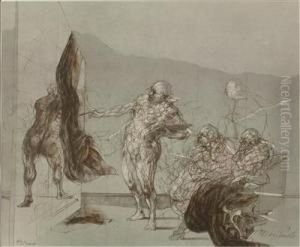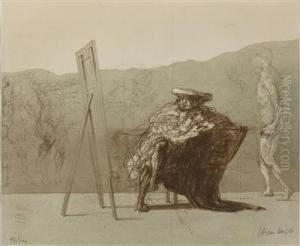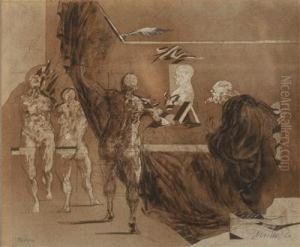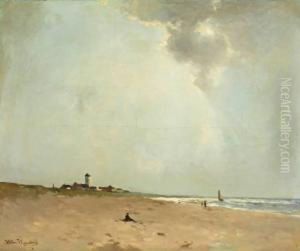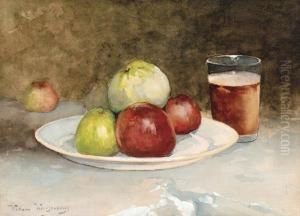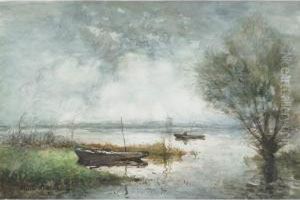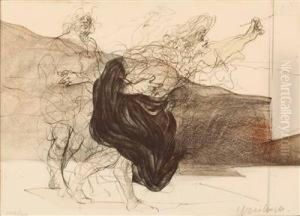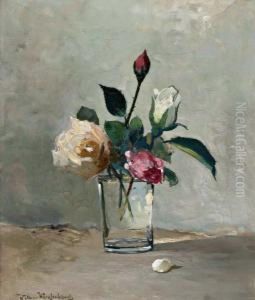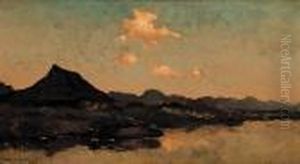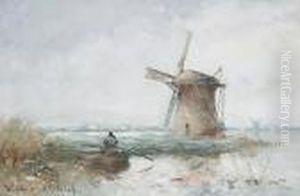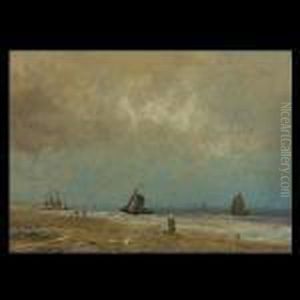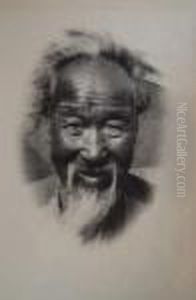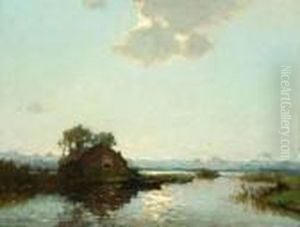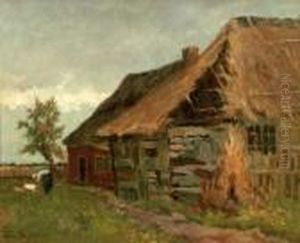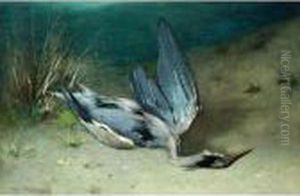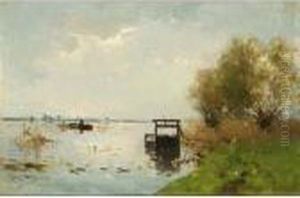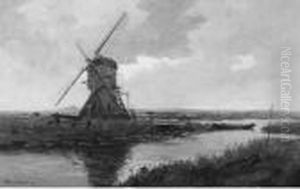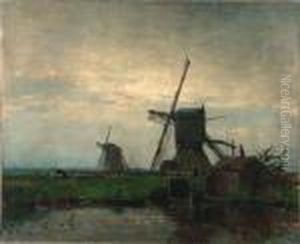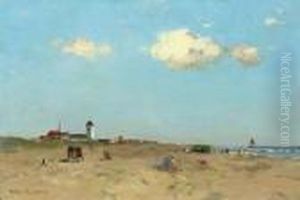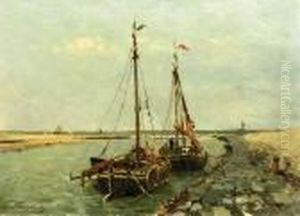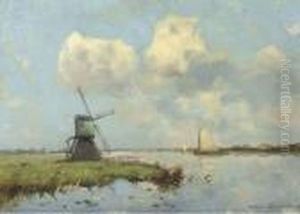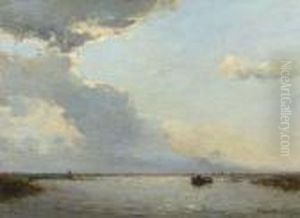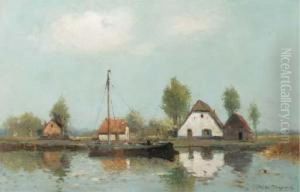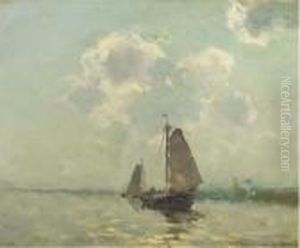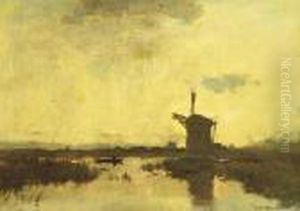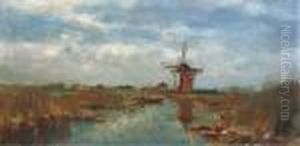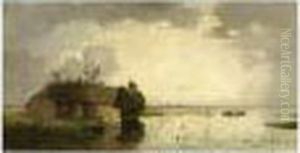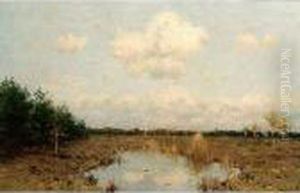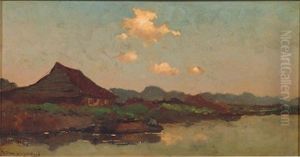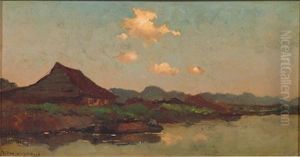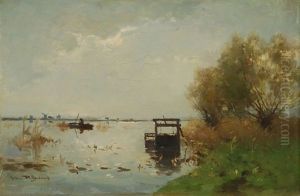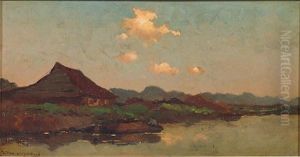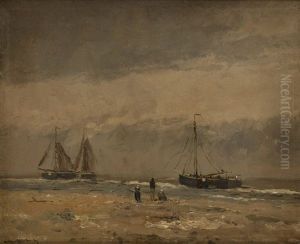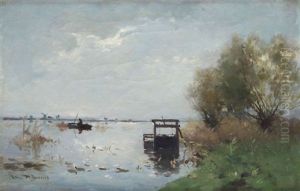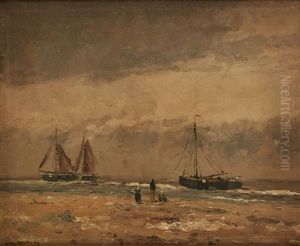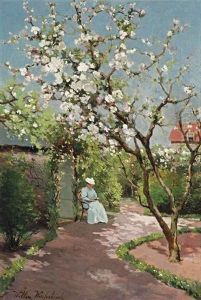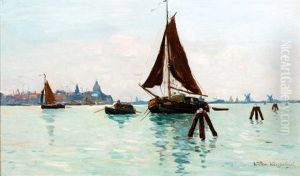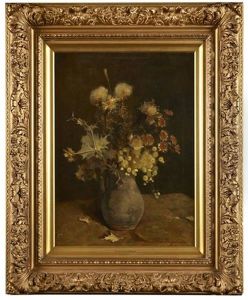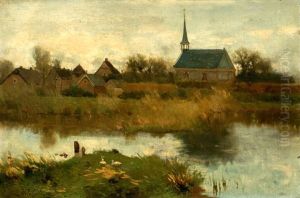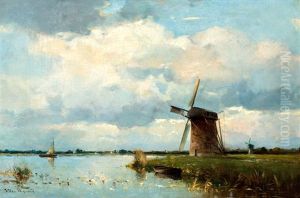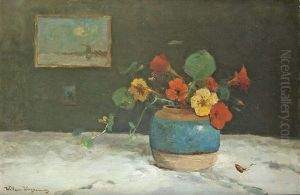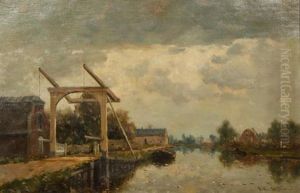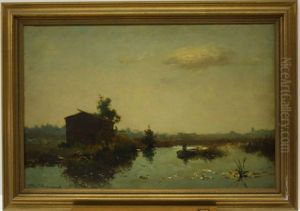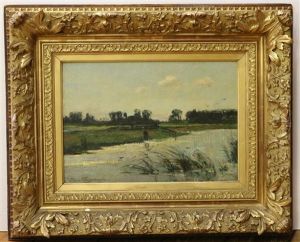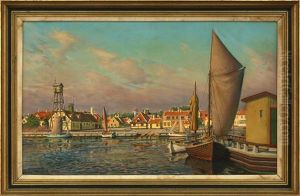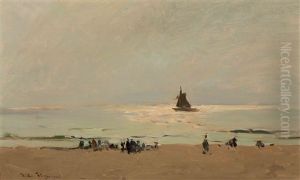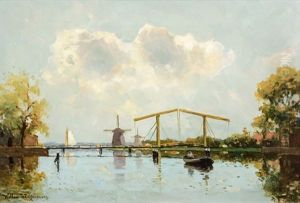Willem Johannes Weissenbruch Paintings
Willem Johannes Weissenbruch, also known as Jan Weissenbruch, was a prominent Dutch landscape painter and a leading figure of The Hague School during the late 19th century. Born on June 19, 1824, in The Hague, Netherlands, he was raised in an artistic environment; his father was an art dealer and his cousin, Jan Hendrik Weissenbruch, was also a painter.
From an early age, Weissenbruch showed a keen interest in art and began formal training at the Royal Academy of Art in The Hague. He was greatly influenced by the 17th-century Dutch masters, particularly in their handling of light and atmosphere. His early works were mostly watercolors, but he later transitioned to oils, which allowed him to experiment with a broader range of textures and tones.
Weissenbruch's landscapes often depicted the Dutch countryside, including scenes of polders, windmills, and waterways. He had a remarkable ability to capture the shifting moods of the sky and the effects of light on water. Unlike some of his contemporaries who traveled abroad for inspiration, Weissenbruch found his subjects in the familiar Dutch landscapes, which he portrayed with an authentic sense of place and moment.
Throughout his career, Weissenbruch struggled for recognition, and it was not until later in his life that he gained the acclaim he deserved. His approach to landscape painting was innovative for his time. He moved away from the detailed academic style and embraced a looser, more impressionistic technique. This evolution is seen in his later works, which are characterized by a free application of paint and an emphasis on light effects.
Weissenbruch was a member of various artist societies, including the Pulchri Studio in The Hague. His works were exhibited in the Netherlands and internationally, and his contributions to Dutch art were acknowledged by his peers and successors.
Willem Johannes Weissenbruch passed away on March 24, 1903, in his hometown of The Hague. Today, his paintings are held in high regard and can be found in major museums in the Netherlands and around the world, including the Rijksmuseum in Amsterdam and the Gemeentemuseum Den Haag. His legacy lives on as a master of Dutch landscape painting, and he continues to inspire landscape artists to this day.
